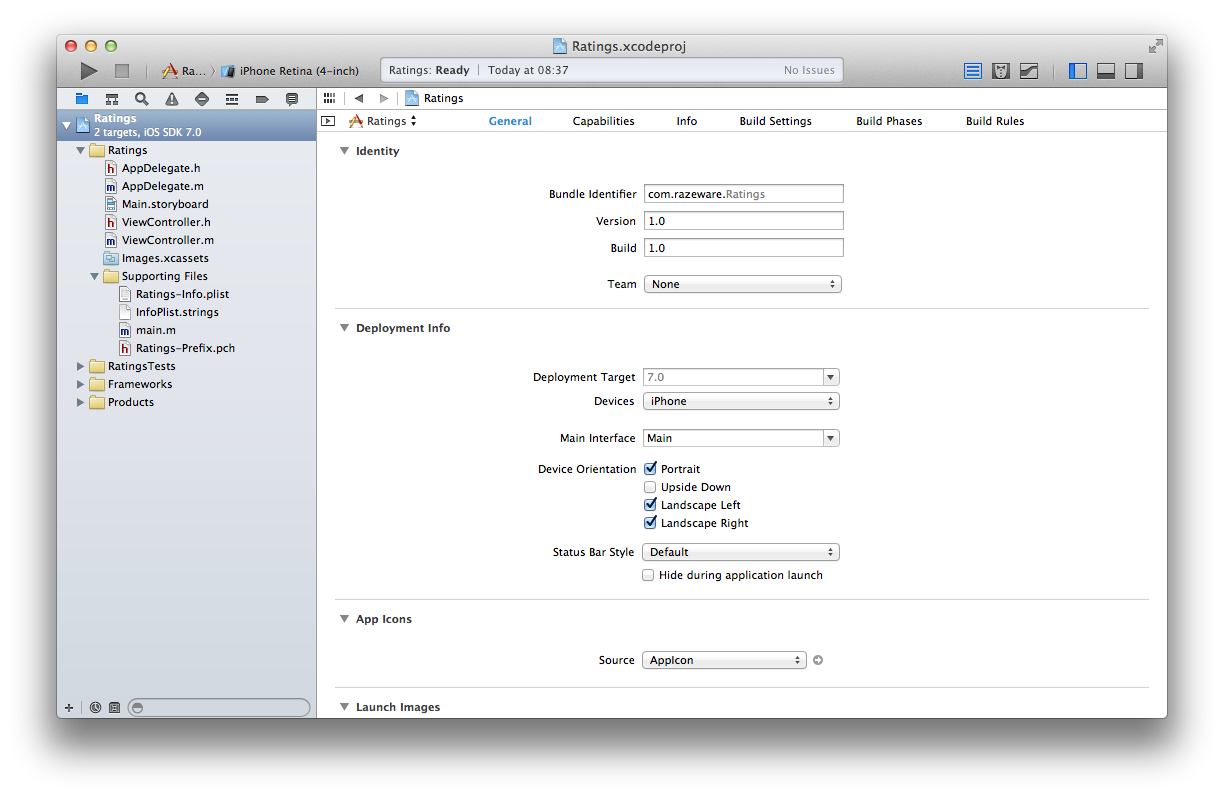
The debug navigator shows threads with the following icons :
Xcode project code#
a code file is edited : you can toggle between File Inspector and Quick Help.The utilities pane at right-hand contains inspectors in the top half that provide information about the current selection or its settings in some cases, these inspectors let you change those settings. Below the search filed is the current search scope. Report (Log) Navigator : lists the recent major actions, such as building or runningĪt the bottom of the navigator pane is a filter which lets you limit what files are shown.Breakpoint Navigator : lists all the breakpoints.Debug Navigator : to track possible misbehavior of the app.Test Navigator : list test files and run individual test methods.Issue Navigator : needed when the code has issues.Find (Search) Navigator : to find text globally, even in frameworks.Symbol (Hierarchical) Navigator : a symbol is typically the name of a class or method.Project Navigator : basic navigation through the files of a project.The Navigator pane itself can display eight different sets of information thus, there are actually eight navigators represented by the eight icons across its top. You select something in the Navigator pane, and that thing is displayed in the editor of the project window. The primary mechanism of the navigator pane at left-hand is for controlling what you see in the main area of the project window. Middle main area : Editor Pane, or simply “Editor”.This window can be configured in the following parts to let you access, edit and navigate your code and to get reports about the progress of building and debugging an app : This is a lot of embodied information that is presented in the Xcode IDE Project Window in graphical form. settings : instructions to the compiler and linker.resources such as icons, images, sounds, ….xib files, graphically describing interface objects The different files and parameters of an Xcode project can be classified as : If you have not yet an Apple Development Account, a warning message says “no signing identity found”. Clicking the create button generates the skeleton of a simple app, with precompiled files and settings, based on the selected template. The flag “ Use Core Data” remains unchecked in a simple project.Ĭlicking the next button shows a file selection window where you can select or create a location (an Xcode workspace folder) and place the project under version control in a Git repository, which is however design overkill for a small tutorial project. The selected device is iPhone, other possibilities are iPad or universal for both iPhone and iPad.


This choice is not binding, you can mix Objective-C and Swift code files. The selected language is Objective-C, the other possibility is Swift. The unique bundle Identifier is automatically set to .HelloWorld by the system. My name is entered as Organization Name and my website domain name is used as Organization Identifier. The product name is used by Xcode to fill in the blank in several places, including some filenames. Other punctuations in the product name can however lead to problems. Spaces are legal in an app name, we could also name the project Hello World. The name of the app ( HelloWorld) is entered as Product Name.


 0 kommentar(er)
0 kommentar(er)
